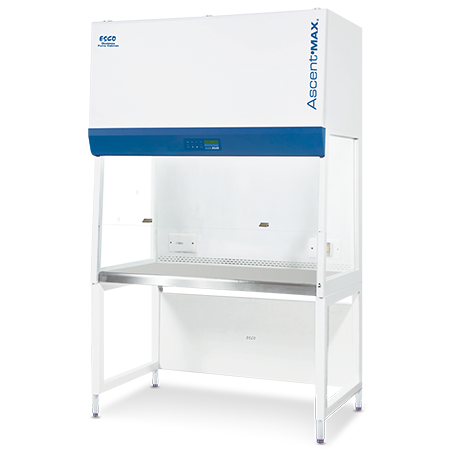Guide to Air Filters: HEPA vs.ULPA Filter

What are Air Filters?
In indoor environments, the presence of dust mites, mold spores, and pollen can lead to health issues for individuals with allergies or asthma.While in commercial settings like electronics manufacturing facilities, air pollution can also harm the electrical equipment being produced.Laboratory and hospital settings also deal with pathogens such as viruses and bacteria that can pose a hazard.To address these concerns, high-efficiency air filters offer numerous advantages by ensuring a safe environment for personnel and preventing cross-contamination.
Air filtration systems safeguard the operator, samples, or the environment by preventing contamination.Air filters are designed to trap a vast majority of very small particulate contaminants from an air stream making it essential to any airflow equipment.The two most common types of air filters are:
- High Efficiency Particulate Air Filter (HEPA Filter) -known for its 99.97% efficiency in removing particles with sizes of 0.3 diameter or larger.
- Ultra-Low Particulate Air Filter (ULPA Filter) -removes smaller particles sizes between 0.1-0.3 microns with an efficiency of 99.999%.
What are the similarities of HEPA and ULPA Filters?
Filtration Process
Both HEPA and ULPA Filters are designed to trap particulate impurities from an airflow by directing air through a fine mesh.In these air filters, particles get caught through three main physical mechanisms: interception, inertial impaction, and diffusion.
Interception- occurs when a particle carried by the airflow comes in contact with a fiber as it passes.Most mid-sized particles are captured via Interception.
Inertial impaction– observed when relatively larger particles, cannot avoid the fibers as it navigates through the airstream.The large particles collide with the fibers and become attached to it.
Diffusion–the interaction of particles caused by Brownian motion or natural movement.Particles below 0.3 microns are trapped during collision with smaller particles (0.1 microns).
Filter Construction
HEPA and ULPA filters are constructed using a similar design principle.Both air filters consist of a dense arrangement of fine fibers that form filter media.The fibers are typically made of materials such as glass, synthetic polymers, or a combination of both.The construction process involves layering and bonding the fibers together to create a dense, intricate network.This network of fibers forms a maze-like structure that effectively traps and retains particulate contaminants.
The air filter media is typically pleated or folded to increase the surface area available for filtration.This maximizes the filter's efficiency and capacity to capture particles.The air filter media is housed within a sturdy frame, which is usually made of metal or plastic.The frame provides structural support and ensures proper sealing within the filtration system.


Note: Usage of pre-filtration can increase the life and optimize performance of the main filter.
Limitations
Both HEPA and ULPA Filters cannot remove gases, fumes, and odors.For applications involving chemicals or removal of scents, acarbon filtermust be utilized.
What are the differences between HEPA and ULPA Filters?
HEPA and ULPA filters may be similar in function but have very different performances.Below are some points stating the major differences between the two air filters.
| HEPA Filter | ULPA Filter | Remarks | |
Efficiency  |
99.995% | 99.999% | ULPA filters provide higher filter efficiency resulting in better operator, product, and environment protection. |
Particle Size |
0.3 microns | 0.1 - 0.3 microns | ULPA filter has higher efficiency in removing smaller particles, ideal for medical applications. |
Safe Environment  |
If 1 million spores are released into the work zone,10 sporeswill escape. |
If 1 million spores are released into the work zone,only 1 spore will escape from an ULPA filter. | ULPA filter entails a safer environment for the users. |
ISO Class  |
ISO Class 5 | ISO Class 3 | ULPA filters provide an ISO Class 3 work zone vs.ISO Class 5 work zone of HEPA filters.Hence, offering a substantiallybetter product or sample protection. |
Filter Life  |
HEPA filters, while slightly less efficient in capturing smaller particles compared to ULPA filters, generally have a longer filter life.They are often more durable and have a lower resistance to airflow, allowing for a longer period between filter replacements. | Since ULPA filters have a higher filtration efficiency and are designed to capture smaller particles than HEPA filters, it may cause shorter lifespan. | Despite higher pressure drop,狗万官网在哪里找uses larger ULPA filter media to achieve longer filter life (typically 8-10 years) similar to HEPA filters used by competitors. |
Savings  |
At the same filter life and replacement cost, ULPA filters reduce the chance of operator infection and product contamination.Potentially reducing liability and product failure cost, yielding huge savings for the users. |
*99.999% at 0.1 to 0.3 micron, ULPA as per IEST-RP-CC001.3 USA
What are the applicable industries and applications for HEPA and ULPA filters?
HEPA filters were originally developed for various industrial, military, and governmental purposes, especially in manufacturing environments where there is a consistent presence of airborne particles.Over time, the popularity of HEPA filters has expanded, and are now commonly used in households, ranging from bedroom air purifiers to vacuum cleaners.
On the other hand, ULPA filter is utilized in applications where an even higher level of efficiency is required to capture the smallest particulate matter and prevent the transmission of airborne bacteria and viruses.ULPA filters are particularly well-suited for critical applications in fields such as medical and healthcare, pharmaceutical research and manufacturing, biomedical laboratories, airline cabin purifiers, clean rooms, electronics, and industries involving nuclear and aerospace applications.
狗万官网在哪里找utilizes both HEPA and ULPA filters in various equipment to ensure a contaminant-free work zone and operator safety.
Esco Equipment using HEPA Filtration

utilizes HEPA-filtered vertical laminar flow to remove contaminants from the work zone during preparatory and amplifications procedures.
REQUEST FOR QUOTE
Ductless Fume Hood with Exhaust HEPA filter.
HEPA filtration is used to capture particulates from powdered chemicals.
Esco Equipment using ULPA Filtration